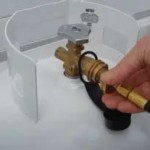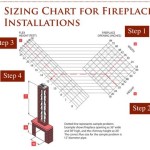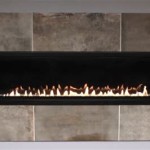Do Electric Fireplace Flames Look Real? A Deep Dive into Modern Technology
Electric fireplaces have become increasingly popular as a convenient and cost-effective alternative to traditional wood-burning fireplaces. One of the primary appeals of an electric fireplace is its visual aesthetic, particularly the simulated flame effect. However, a common question among potential buyers is whether these flames truly replicate the look and feel of a real fire. The answer is complex, involving a blend of technological advancements and subjective perception. This article will explore the various factors influencing the realism of electric fireplace flames, examining the technologies used, the challenges faced, and how different models achieve varying degrees of authenticity.
The desire for a realistic flame effect stems from the inherent human connection to fire. For centuries, fireplaces served as a central gathering point, providing warmth, light, and a sense of security. Modern electric fireplaces aim to recapture this ambiance without the mess, maintenance, and safety concerns associated with wood or gas-burning alternatives. The pursuit of flame realism is therefore a crucial element in the design and marketing of these appliances.
Understanding the Technology Behind Electric Fireplace Flames
The fundamental principle behind electric fireplace flames involves creating an illusion of flickering light and movement. Early models relied on simple mechanisms, often using rotating reflectors and colored bulbs to project patterns onto a screen. While these were adequate for their time, they lacked the depth and nuance of a real flame.
Modern electric fireplaces utilize more sophisticated technologies. Light-emitting diodes (LEDs) have become the standard light source, offering energy efficiency, longevity, and the ability to produce a wide range of colors. These LEDs are often paired with carefully designed reflectors, screens, and even holographic elements to enhance the realism.
One common technique involves projecting light onto a partially reflective surface, such as a screen or a series of mirrors. The light is then manipulated to create the illusion of flickering and dancing flames. Some models incorporate moving parts to further enhance the effect, simulating the unpredictable nature of a real fire.
Advanced models may use multiple layers of projection and reflection to create a three-dimensional effect. These layers can be adjusted independently to control the intensity, color, and movement of the flames, resulting in a more realistic and dynamic display. Some manufacturers even employ holographic technology to create the illusion of flames rising from a simulated log set.
The choice of media also plays a critical role. Faux logs, embers, and even crystals are used to scatter and reflect light, adding depth and texture to the flame effect. The arrangement and material of these elements can significantly impact the overall realism of the fireplace.
Key Factors Influencing Flame Realism
Several factors contribute to the perceived realism of electric fireplace flames. These factors relate to both the technology used and the observer's subjective perception.
Brightness and Color Accuracy: The brightness and color of the simulated flames are crucial elements. An overly bright or artificially colored flame can detract from the realism. Ideally, the colors should closely resemble those of a real fire, ranging from deep reds and oranges to subtle yellows and whites. The ability to adjust the brightness and color temperature allows users to customize the flame appearance to suit their preferences and ambient lighting conditions.
Flickering Patterns and Movement: The movement and flickering patterns of the flames are equally important. A static or repetitive pattern will quickly become unconvincing. Realistic flames exhibit a degree of randomness and unpredictability. Advanced models use sophisticated algorithms to generate flame patterns that mimic the natural fluctuations of a real fire. Some even incorporate sensors to detect changes in room temperature, adjusting the flame intensity accordingly. The speed and intensity of the flickering should also be adjustable, allowing users to create a subtle ambiance or a more dramatic display.
Depth and Dimension: The perceived depth and dimension of the flame effect contribute significantly to its realism. A flat, two-dimensional flame will appear less convincing than a three-dimensional display. Manufacturers use various techniques, such as layering projections and incorporating reflective surfaces, to create the illusion of depth. The arrangement of the faux logs and embers also plays a critical role in enhancing the three-dimensional effect. The use of holographic technology can further enhance the sense of depth and realism by creating the illusion of flames rising from the log set.
Sound Effects: While primarily a visual experience, the addition of sound effects can enhance the overall realism of an electric fireplace. Many models include built-in speakers that simulate the crackling and popping sounds of a real fire. The synchronization of these sounds with the visual flame effect can create a more immersive and convincing experience. The quality and realism of the sound effects are therefore important considerations.
The Quality of the Faux Log Set: The realism of the faux log set has a significant impact on the overall aesthetic. High-quality log sets are crafted with attention to detail, replicating the texture, color, and shape of real wood. The arrangement of the logs and embers should also appear natural and realistic. Poorly designed or cheaply made log sets can detract from the overall realism of the fireplace, regardless of the quality of the flame effect.
Challenges in Replicating True Flame Realism
Despite significant advancements in technology, replicating the exact appearance and behavior of a real fire remains a significant challenge. Several factors contribute to this difficulty.
Complexity of Combustion: The combustion process in a real fire is incredibly complex, involving a multitude of chemical reactions and physical phenomena. Simulating this level of complexity in an electric fireplace is extremely difficult. Real flames exhibit intricate patterns of movement, color variation, and temperature gradients that are hard to replicate artificially.
Limitations of Display Technology: Current display technologies have inherent limitations in terms of color reproduction, brightness, and resolution. These limitations can affect the perceived realism of the simulated flames. While LEDs offer a wide range of colors, they may not be able to perfectly replicate the subtle nuances of a real fire. Furthermore, the resolution of the projection system can limit the level of detail that can be achieved.
Subjective Perception: The perception of flame realism is subjective and can vary from person to person. Factors such as individual preferences, ambient lighting conditions, and viewing distance can all influence how realistic the flames appear. What one person considers to be a convincing flame effect, another may find artificial and unconvincing.
Manufacturing Costs: Producing electric fireplaces with truly realistic flame effects can be expensive. The sophisticated technologies and high-quality materials required to achieve a high level of realism can significantly increase the manufacturing costs. This cost is then passed on to the consumer, making these models less accessible to budget-conscious buyers. As technology advances and production costs decrease, more affordable options with improved realism are likely to become available.
Maintaining Illusion: Even in advanced models, maintaining the illusion of a real flame over extended periods can be challenging. The repetitive nature of the flame patterns, even with sophisticated algorithms, can become noticeable over time. Users may eventually become accustomed to the visual effect, reducing its perceived realism. Regular updates to the flame algorithms and the ability to customize the display can help to mitigate this issue.

Do Electric Fireplaces Look Real Check The Flame Here

Realistic Electric Fireplace Modern Flames

The Most Realistic Electric Fireplace Flames Dimplex Vs Magikflame

A Guide To Realistic Electric Fireplaces Direct Learning Center

What Is The Most Realistic Electric Fire Fireplace Finesse

The Best Flame Effect Electric Fires Direct Fireplaces

11 Best Electric Fireplaces 2024 Most Realistic

Electric Fires That Look Like Real British

The Most Realistic Electric Fireplace On Market In 2024

ᑕ❶ᑐ Electric Fireplace With The Most Realistic Flame
Related Posts








